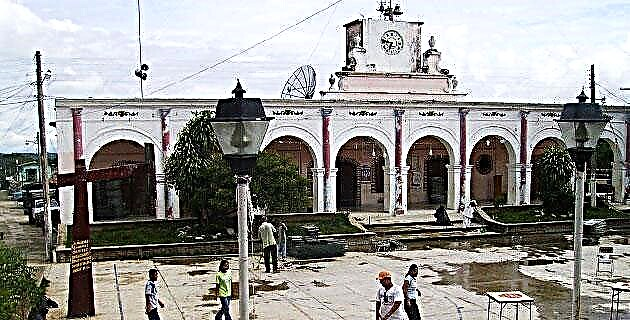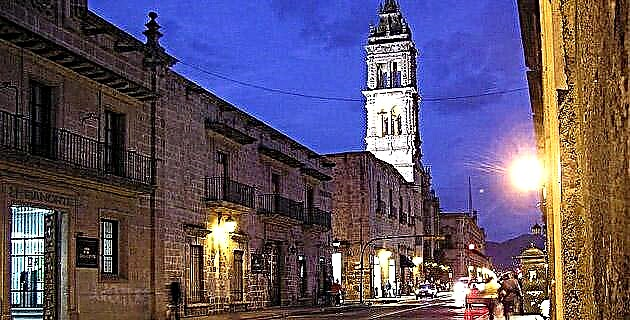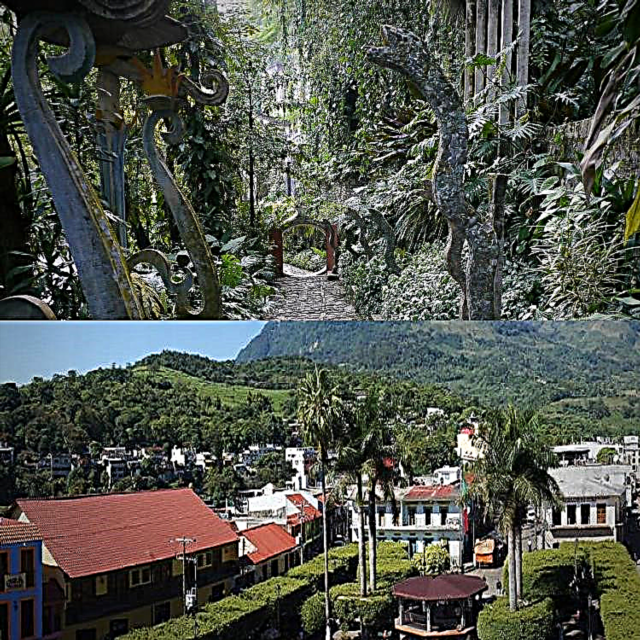This station marks the beginning of the systematic monitoring of seismicity in the volcano region. Since 1993 there has been an increase in both seismic and fumarolic activity. Even the mountaineers who ascended at that time saw it repeatedly.
At the beginning of 1994 observation stations with a better location are installed. Thus, the Ministry of the Interior, through the General Directorate of Civil Protection, entrusted Cenapred with the design and implementation of an extensive local seismic network with the specific purpose of monitoring and overseeing the activity of Popocatépetl.
In the second half of 1994, the first and second seismic stations of this network were installed, between the Institute of Engineering and Cenapred. Parallel to the field activities, the signal recording equipment began to be installed in the Cenapred Operations Center.
The fumarolic activity developed in the last two years culminated in a series of volcanic shocks in the early hours of December 21, 1994. Four stations were operating that day and they were the ones that recorded the explosive events.
As day broke, an ash plume (the technical name for the unfolding of very spectacular grayish clouds) was observed, for the first time in decades, emerging from the volcano's crater. The ash emission was moderate and produced an almost horizontal cloud with ash fall in the city of Puebla, located 45 kilometers east of the summit. According to studies carried out, the earthquakes that occurred on December 21 and others are the product of a fracture of the internal structure that originates the opening of conduits through which abundant gases and ashes escape.
In 1995, the monitoring network was complemented and perfected with the placement of stations on the southern slope of the volcano.
Multiple obstacles were faced for the installation of this equipment, such as the weather, the communication routes that are scarce in other parts of the volcano (except the north face), so gaps had to be opened.
Glacial monitoring network
A glacier is a mass of ice that flows by action of gravity moving downhill. Little is known about the glaciers that cover mountains with volcanic activity such as Popocatepetl; however, their presence represents an additional danger in the vicinity of this type of volcano, hence the need to study these ice bodies. In this sense, some geological studies on the glaciers that cover the volcano are being verified by means of a glacial monitoring network.
In Popocatepetl, the glaciated area reported in the latest research covers 0.5 km². There is a glacier called the Ventorrillo and another called the Noroccidental glacier, both born very close to the summit of the volcano. The first exhibits a north orientation and descends to 4,760 meters above sea level; It ends in three languages (notable extensions), which present a strong inclination, and its maximum thickness is estimated at 70 meters. The other glacier shows a northwesterly orientation and ends at 5,060 meters above sea level; it is considered a thin glacier that ends smoothly, and is the remnant of a larger glacier.
On the other hand, the observation of photographic records and the comparison of glacial inventories indicate that there is a frank retreat and thinning of the ice masses of Popocatepetl caused, in principle, by the global climate change that is occurring on Earth. When comparing the two inventories published in 1964 and 1993, a reduction of the glacier of 0.161 km² is calculated, or close to 22 percent.
It is also considered that the influence of environmental pollution in Mexico City (which reaches more than 6,000 meters above sea level) can affect the glaciers of Popocatepetl due to the greenhouse effect that increases air temperature.
Although the ice mass of this volcano is small, it is still robust enough and could be influenced by the activity of the mountain and partially or totally melt, causing serious damage. The worst scene would be if there was an explosive eruption. It should be clarified that what is seen are not always explosive manifestations, since an exhalation is the emission of gas and ash that is characterized by seismic events of low magnitude and depth, while an explosion includes ash, gases, and larger material, with high frequency earthquakes (high magnitude and depth).
The mixture of ash with melting water from the glacier could cause a flow of sludge that would move through the channels where the glaciers drain water and reach the populations that are at the end of these, especially on the Puebla side. There are geological studies that account for the occurrence of these phenomena in the past.
In conclusion, if the glaciers were to be affected by an eruption or because man has accelerated their retreat process, there would be an alteration in the rhythms of water supply to the surrounding populations. This would affect the economic development of the region and generate a long-term desertification effect that is difficult to predict.
Estimation of affected populations
The Institute of Geography has been in charge of investigating the possible repercussions on the population due to a possible ash fall. During the first semester of 1995, the direction and dimension of the ash plume was analyzed from images from the GEOS-8 satellite on December 22, 26, 27, 28 and 31, 1994. With this, the impact on the population within a radius of 100 kilometers around the volcano.
Thanks to the data on the behavior of the atmosphere and the appreciation of the direction changes of the plume or ash cloud revealed by the satellite images, it can be deduced that the southeast, south and east directions are the predominant ones. This is explained by the more frequent wind systems in winter. Likewise, it is estimated that in the summer the ash cloud would change its dominant direction to the north or west, thus completing an annual cycle.
The territorial space that has been analyzed in the study is approximately 15,708 km² and covers the Federal District, Tlaxcala, Morelos and partially the states of Hidalgo, Mexico and Puebla.
A particular case of affectation would appear for Mexico City, because the amounts of ash from Popocatépetl would add to its high pollution conditions (at least 100 pollutants have been detected in its air), and therefore there would be greater risks for the health of its inhabitants.
The reactivation of the volcano during 1996
To explain and understand recent events, it is necessary to mention that inside the Popocatepetl crater there was a second crater or internal depression. This structure was formed after the explosion caused by workers who extracted sulfur in 1919. Before the last events that occurred, at its bottom there was also a small lake of greenish waters that behaved intermittently; however, at present, both the lake and the second inner funnel have disappeared.
With the activity that occurred in December 1994, two new conduits were formed, and with the reactivation of the volcano in March 1996, a third conduit has been added to the previous two; all three have a southeast location. One of them (the one furthest south) has been showing higher gas and ash production. The conduits are located at the bottom of the crater attached to the interior walls and are smaller unlike the second funnel that disappeared, which was in the central part of the great crater and was larger.
It has been found that the earthquakes that occur come from these conduits and are produced by the rapid release of gases that carry ash from the volcanic conduits, taking them with them. The epicenters of the earthquakes detected on the northern slopes find their hypocenter, most of them, between 5 and 6 kilometers below the crater. Although there have been others deeper, 12 kilometers, which represent greater danger.
This causes an unfolding of the so-called feathers composed of old and cold ashes, which according to the prevailing winds are carried and deposited in the vicinity of the volcano; the most exposed parts so far are the northeast, east and south slopes that face the state of Puebla.
To the general process was added a slow expulsion of lava (started on March 25, 1996) from a 10-meter diameter mouth, located between the new gas and ash emanation ducts. In principle it was a small tongue formed by blocks of lava that tended to fill the depression formed in 1919. This process of lava extrusion produced a deflation or inclination of the cone towards the south invading the interior of the crater together with the emergence of a dome of scum on April 8. Consequently, Popocatepetl showed a new state of danger as witnessed by the death of 5 mountaineers, who were apparently reached by an exhalation that occurred on April 30.
Finally, aerial observations have provided information that confirms that the reactivation process is very similar to those reported between 1919 and 1923, and very similar to that which has developed in the Colima volcano for almost 30 years.
Cenapred specialists affirm that this process could stop after a while, because at the current speed, it would take several years for the lava to pass the lower lip of the Popocatépetl crater. In any case, monitoring is carried out to the maximum 24 hours a day. At the end of the report, the normal accesses to Tlamacas continue to be closed and the volcanic alert - yellow level - established since December 1994 has been maintained.











